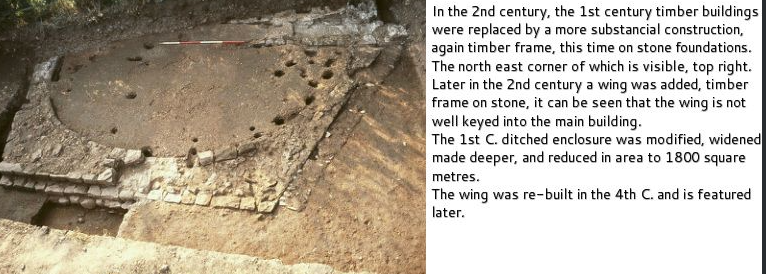Roman Acton Trussell
In 1982 a team of archaeologists conducted a field walking exercise seeking evidence for a shifted village that was said to have once stood in the vicinity of St. James's Church at some time in the late middle ages. What emerged was not the remains of a shifted village but something much older a Roman Villa dating back to the first century AD much of which lay under the churchyard. This discovery launched an archaeological excavation that was to last nearly than thirty years.

Since the Bronze Age the natives of Britain lived in traditional round houses this was to change , at least for the better off, as the Roman style of timber built corridor villa was adopted in the late 1st century.

The Roman invasion of Britain in 43AD must have been something of culture shock to the native people who had cultivated the land in and around Stafford for generations. Following the shock of conquest the native British accepted Roman rule and in many ways embraced it.
The Romans introduced much that was new including currency and with it taxation (thank you for that Rome).
Tax was often levied in the form of grain necessary to feed the legions and so to meet the demand the locals cleared more land to grow more crops
Whist life would have been hard for many, particular the slaves who worked the land, some native Britons grew rich on the profit to be made supplying the legions including the owner of the luxurious villa the remains of which lie under the church of St. James.

Evidence of the earliest Roman style building the linear features being earlier.
The first century villa was replaced in the second century by one larger and built on stone foundations much of the evidence lies under the churchyard however archaeologists were able to uncover the foundations of the triclinium or formal dining room. It was the Roman custom to dine lying on couches rather than seated on chairs.


Excavation continued over several seasons and the picture emerged of a substantial villa building at the centre of a large agricultural estate standing inside a ditched enclosure most likely to keep animals out rather than being defensive in nature. The enclosure dated from the first century note the north leg is almost parallel with the later church tower. The enclosure ditch was shortened in the second century.
Site plan in blue showing 2nd century ditched enclosure surrounding the villa complex note the location of the 12th century and the triclinium .
Selection of finds